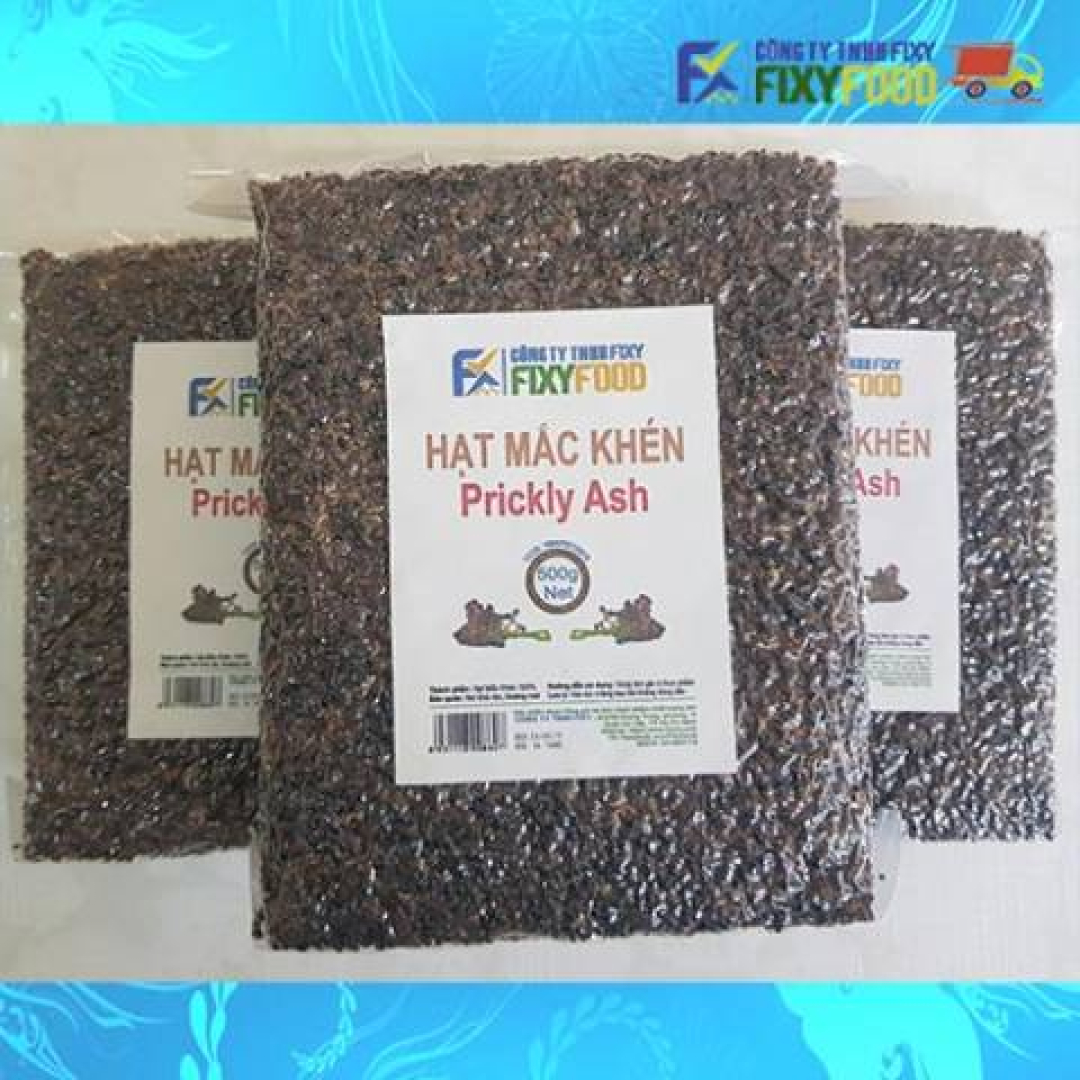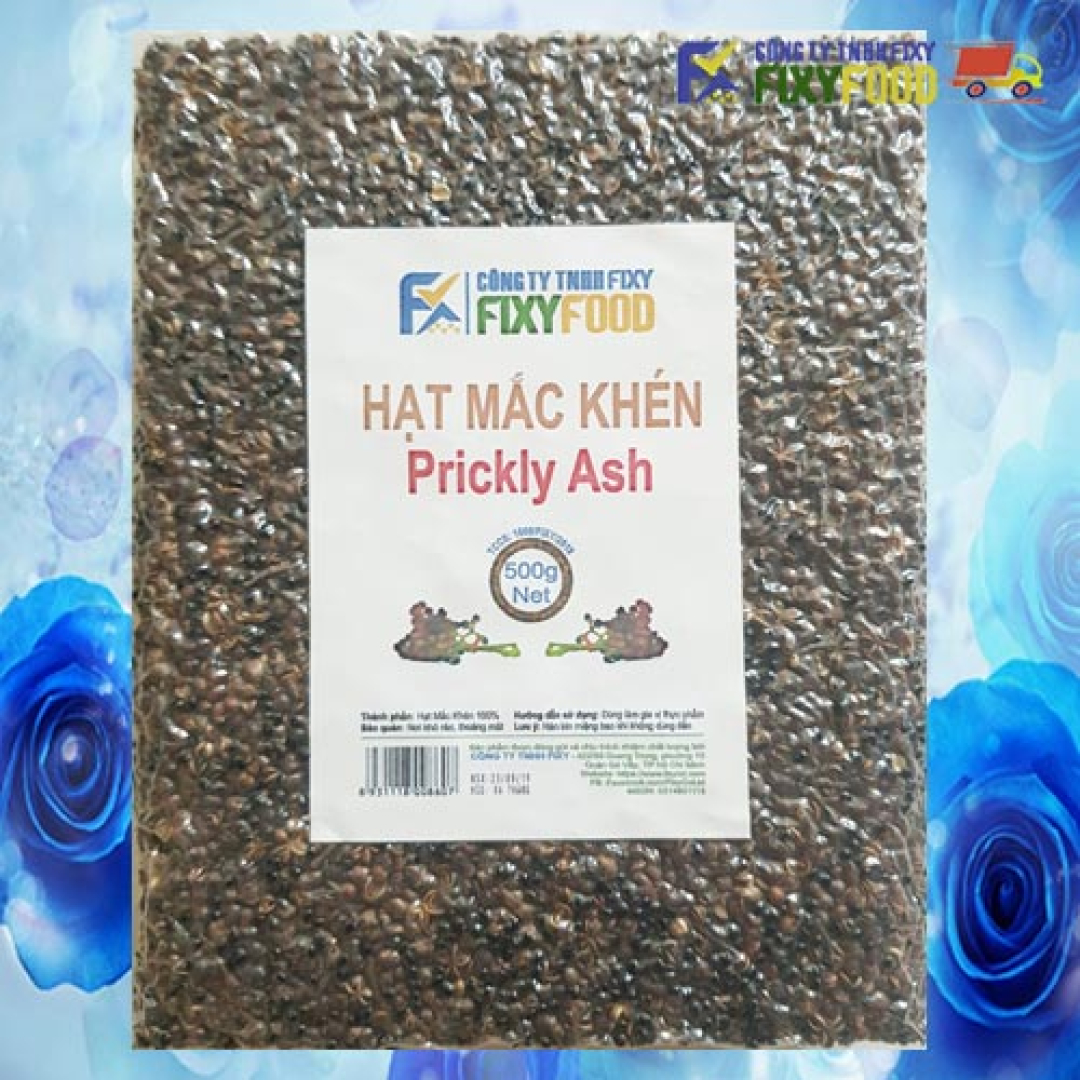Prickly ash, commonly referred to as northern prickly ash, is an herbal supplement often used to treat joint pain, arthritis, circulation problems, and more. Prickly ash comes from the plant family of the Rue (Rutaceae) genus. Other names for prickly ash include toothache bark, zanthoxylum, suterberry, Angelica tree, pepper wood, Chuan jiao, clavalier, toothache tree, and yellow wood.
The perennial plant grows as either a shrub or a tree that can grow up to 26 feet in height. The plant has dark brown branches with prickles that are up to a half an inch long—thus the name prickly ash. The twigs of the prickly ash shrub/tree have a strong smell, mimicking that of lemon peel. The small leaf buds are red and woolly, and greenish-yellow flowers appear in spring before its dark green leaves emerge. In late summer the fruit ripens, turning from its original green color to reddish brown.
Prickly ash is native to Missouri. It grows in most areas of the state (except for in the Ozarks region), as well as other areas in Eastern North America. It is commonly found in moist ravines, thickets, and woods, as well as upland rocky bluffs and hillsides and open wooded areas. There is also an Asian version (which has some of the same properties as prickly ash) called crow prickly ash.

History
Historically, many Native American tribes used prickly ash as a medicinal herb. The natives used an infusion of the bark to treat everything from itchy skin to back pain. They used prickly ash to treat cramps, fevers, colds, lung conditions, toothaches, and sore throats. Natives also used prickly ash to treat pain after childbirth as well as colic in babies.
In the 19th Century, Charles Millspaugh described the use of prickly ash in his book "American Herbal Medicine." In it, he identified prickly ash as a remedy for pneumonia, cholera, typhus, typhoid, and more. Millspaugh explained in his book, “The action was prompt and permanent.” Millspaugh wrote, “Prickly Ash acted like electricity, so sudden and diffusive was its influence over the entire system. I consider the tincture of Prickly Ash to be superior to any form of medication I know of.”
Health Benefits
Prickly ash is commonly used to promote blood flow throughout the body, specifically for the treatment of rheumatism. Rheumatism (including various types of arthritis) is any disease involving pain and swelling or inflammation of the joints, ligaments, and muscles.
Prickly ash is said to help improve rheumatism and alleviate joint pain by improving the peripheral (local) blood flow supply that carries much-needed nutrients to help repair cartilage tissue and regenerate joint and disc damage.
Prickly ash is said to have several health-promoting properties including:
Digestive aid
Circulatory stimulant
Diaphoretic (induces sweat for sweating out a fever)
Tonic (invigorates and strengthens the body)
Blood and lymphatic circulation stimulant
Anti-rheumatic
Carminative (relieves gas)
Sialagogue (promotes saliva secretions for those with a dry mouth)
Antifungal agent
Liniment (an invigorating rub that quickly stimulates circulation to help with muscle pain)
Cytotoxin (a substance that is toxic to cells, such as cancer cells)
Lymphatic stimulant
Rubefacient (improves blood flow to the small vessels)
Medical Conditions
Although prickly ash has been traditionally used to treat many common maladies, there is very little clinical research evidence to support its many claims of effectiveness in treating conditions such as joint pain, cancer (preliminary studies have shown anti-cancer properties in prickly ash), toothaches, sores, ulcers, fevers, blood pressure and circulatory problems, swelling, leg cramps, varicose veins, and Raynaud’s syndrome (a condition caused by constant cold that results in spasms of the arteries and of the arms and legs).
How It Works
Prickly ash bark contains alkaloids, which are nitrogen-containing plant compounds that cause physiological actions. Examples of alkaloids are morphine, quinine, and more. Prickly ash also contains an alkamide, which causes a numbing feeling on the tongue and mouth. This may be the reason prickly ash was commonly used for toothaches—although there is inconclusive clinical research evidence to show that prickly ash is safe and effective in relieving tooth pain.
The fruit of the prickly ash shrub contains the volatile oil component of the plant. Volatile oils have many different therapeutic uses.
They stimulate the tissues resulting in dilatation of the veins, which also promotes circulation. They also have a rubefacient effect. This means that when volatile oils are used on the skin, they produce redness, causing dilatation of the capillaries (small blood vessels) and increased blood flow. When taken internally, stimulant volatile oils—such as the oil from prickly ash—have an effect on the digestive and circulatory systems.
Studies
Any condition involving poor circulation, including conditions of the lymphatic system, is said to potentially benefit from the use of prickly ash. But what does the medical research say?
Preliminary studies have discovered that prickly ash has some antifungal properties from the plant’s alkaloid properties. Other studies found that northern prickly ash has cytotoxic properties (ability to kill cells such as cancer cells) and anticancer properties. This is due to its organic compounds such as terpenoids, coumarins, and alkaloids, but more research is needed to prove the safety and efficacy of prickly ash for these conditions.
The study found that extracts from the berries of the prickly ash bush may be valuable as antitumor agents, due to their reported cytotoxic effects. “On the basis of these experimental and literature evidence the same plant's crude extract and its fractions are under study for anticancer activity on different cell lines in the author's laboratory,” wrote the study authors.
A study published in Science Direct discovered that prickly ash may improve blood flow, but there has not been enough conclusive evidence to show efficacy or safety in the use of prickly ash for specific conditions.
Possible Side Effects
There are no known major side effects from the use of prickly ash—when used in doses that are recommended. There have been reports of sensitivity to sunlight (skin that burns easier than normal) as a result of prickly ash use.
Allergic symptoms can be experienced by taking prickly ash—or any other medicinal herb, drug, or over the counter supplement or medication.
If a person experiences any signs of an allergic reaction, the herb should be immediately stopped, and emergency medical attention should be sought right away. Signs of an allergic reaction to prickly ash may include:
Hives on the skin
Rash
Itchy, swollen areas of the skin
Tightness of the throat or chest
Breathing problems
Chest pain
Contraindications
There are some medical conditions, factors or other instances (called contraindications) when prickly ash should not be used. One such contraindication is when a person has digestive disorders such as ulcerative colitis, Crohn’s disease, irritable bowel syndrome, peptic ulcer, gastroesophageal reflux (GERD), infections of the GI tract (such as diverticulitis), and other GI disorders.
Other contraindications of prickly ash, or conditions in which prickly ash should not be used, include pregnancy (it may stimulate menstruation, inducing a miscarriage), breastfeeding mothers, those taking blood-thinning medicine such as warfarin (Coumadin), those taking any medications that reduce stomach acid, heart disease, and hypertension (high blood pressure).
A person should consult with their healthcare provider before taking prickly ash, especially when taking any type of prescription medicine, over the counter drugs, or other medicinal supplements.
Prickly ash should be avoided for those who have certain digestive disorders, due to its digestive stimulant effects, which increases stomach acid. Producing a surge of stomach acid can help promote digestion for those who do not have serious GI (stomach and intestines) conditions.
However, if a person suffers from a condition such as peptic ulcers, increasing the stomach acid would be very detrimental. Prickly ash counteracts the effect of medications that reduce stomach acid such as:
Rolaids, Tums (or other types of antacids)
Tagamet
Zantac
Pepcid
Prilosec
Nexium
Other antacids
Dosage and Preparation
As with all other medicinal herbs, always consult with the healthcare provider about the dosage of prickly ash before taking it. Do not take more than is prescribed by a healthcare professional or more than is recommended on the label of the bottle.
Prickly ash is commonly used by infusing it into an oil or making a tea or a tincture (a concentrated substance with alcohol).
Dosage recommendations from Chrysalis Natural Medicine Clinic include:
250 to 750 milligrams of powder (such as in a supplement) three times per day
1 teaspoon of bark in one cup of water (simmer for 20 minutes) two to three times per day (decoction which is a medicinal preparation involving the liquor, resulting from concentrating the essence of prickly ash by heating or boiling it)
1:5 ratio of 10 to 20 drops two to three times per day of a tincture
Storage and Preparation
Store prickly ash away from heat, out of direct sunlight, and away from moisture—avoid storing all herbal supplements in the bathroom medicine chest (where there is a lot of humidity) and other damp places. Heat and moisture may work to break down prickly ash and render it ineffective.
Dr. Richard Whealan, licensed medical herbalist, suggests specific prickly ash dosages by condition, including the following:
Toothaches: Use prickly ash tincture and soak a small piece of cotton in it, then apply it directly to the sore tooth. Another method for treating a toothache is to use the powder from prickly ash bark, sprinkling it on a piece of bread, after spreading the bread with peanut butter. Next, mold the bread with the powdered medication around the tooth. Traditionally, the bark was simply chewed to relieve tooth pain, explains Whealan.
Dry Mouth: Use a small amount of prickly ash powder or tincture and place it directly on the tongue, try to keep it in the mouth until it’s absorbed, re-applying every few hours. This should help to significantly improve dry mouth, as a temporary treatment, until medical attention can be sought.
You can also use prickly ash to make a tea. Simmer one to two teaspoons of the bark for up to 15 minutes, as suggested by Dr. Whealan for making a tea. Note, prickly ash is said to work best when taken right before meals.
It's important to emphasize, however, that your doctor should be consulted for proper doses of prickly ash if you are looking to use it for certain health conditions.
What to Look For
When buying prickly ash, check for quality assurance testing during the entire process of drying, milling, and packaging the herb. Quality assurance should be done both in-house, as well as by a third party, independent organization.
It’s also important to purchase organic, wild-harvested herbal supplements for the utmost purity and potency of medicinal herbs.



